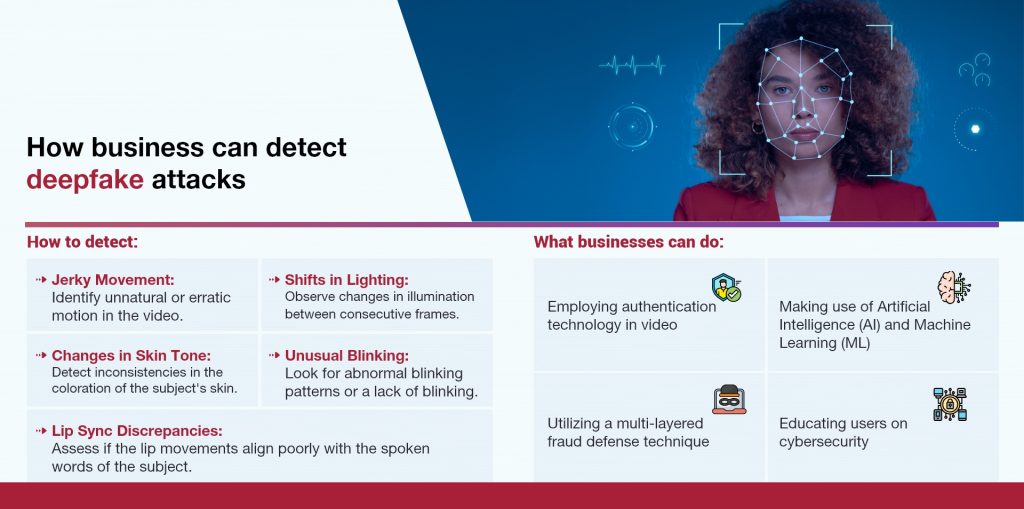
Posted On Dec 12 2024 | 10:47
Part 2 continues from our exploration of Deepfake Technology in Part 1. Uncover strategies for detecting Deepfakes and learn how organizations can enhance their detection capabilities.
To identify and prevent deepfakes, there are a several methods and technologies available:
1. Employing authentication technology in video: This involves using innovative technology to verify the source and accuracy of video content.
2. Using Artificial Intelligence (AI) and Machine Learning (ML): Attackers are getting increasingly innovative with AI and ML to generate realistic images and videos that look realistic. AI and ML can identify discrepancies in deepfake content.
3. Utilizing a multi-layered fraud defense technique necessitates utilizing several layers of security measures to identify and block deepfake attacks.
4. Educating users on cybersecurity: As users are usually the weakest link in security, it is important to inform them about identifying deepfakes. This can include teaching them to detect signs of manipulation like unnatural eye movement or facial features.
5. Applying blockchain technology: Blockchain can help combat deepfakes by providing a secure and immutable record of digital assets, which can assist in verifying the validity of digital content.

To incorporate deepfake detection strategies into existing cybersecurity protocols, the following measures are essential for enterprises:
1. Utilize Deep Learning-Based Detection Approaches: Deep Learning is an effective tool in cybersecurity, as it has the potential to analyze large datasets and recognize potential deepfakes.
2. Incorporate Deepfake Learning Modules into Cybersecurity Training: Create hands-on labs and training modules specifically designed for deepfake detection.
3. Make AI Systems Resilient to Deepfakes: During AI systems’ design and deployment stages, measures must be taken to increase their robustness against deepfakes. – For example, adding additional security layers, confirming the accuracy of input data, and regularly updating detection models should be implemented.
4. Detect Varied Types of Deepfakes: Deepfakes can manifest in various formats, including video, image, audio, and text. Employ multi-modal detection techniques to thoroughly check for these various kinds of threats.
5. Identify Deepfakes that Bypass Detection: Gather intelligence sources to identify new and changing deepfake techniques. Establish a system for continuously monitoring and analyzing emerging threats, such as those launched by state-sponsored hacking teams.
6. Perform Comprehensive Forensic Analysis of Found Deepfake Payloads: Once a deepfake is identified, conduct a thorough forensic analysis to understand its source, purpose, and potential influence. This analysis can offer insight into the tactics and methods employed by malicious actors, which can improve detection and response strategies.
By taking these steps, it is possible to create a comprehensive and adaptive deepfake detection system that can be included in the existing cybersecurity framework. Regularly updating and refining these strategies is essential as malicious actors’ technology and tactics are constantly evolving.
Part – 3 is coming your way, packed with essential guidelines, secret tips, and savvy strategies to safeguard your enterprise from the deepfake jungle. Trust us, it’s a series you won’t want to miss! Stay tuned; we’re serving it up soon.
